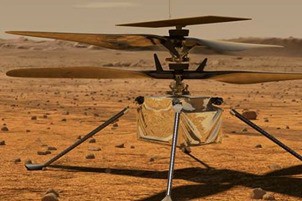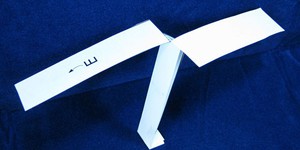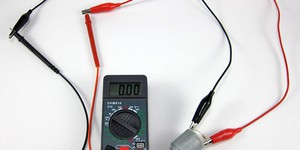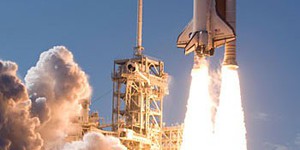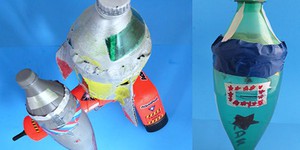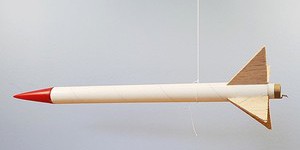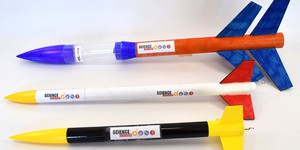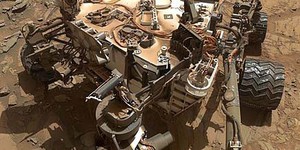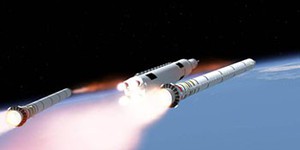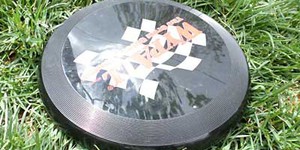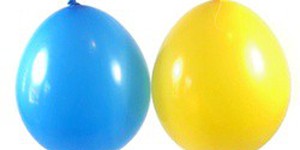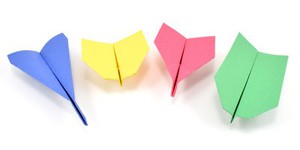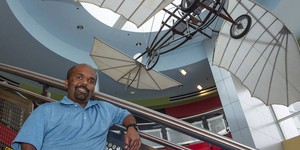Summary
Introduction
During the Mars 2020 mission, NASA plans to explore the surface of Mars using a rover in combination with a lightweight helicopter. To be able to fly on Mars, this helicopter must be super light and have very efficient blades. If not, it will never generate enough lift to get off the ground. In this activity, you will make your own paper helicopter and test different blade designs. Will your findings be reflected in NASA's design? Try it out and see for yourself!
Materials
- Computer with access to a printer to print the paper helicopter template. (If you do not have access to a printer, you can use a ruler and pencil to draw your own paper helicopter template based on the online one.)
- Printer paper
- Scissors
- At least 2 identical paper clips
- A safe, high place from which to drop the paper helicopter. (You could have an adult help you stand on a chair or choose a balcony with safe railing, for example.)
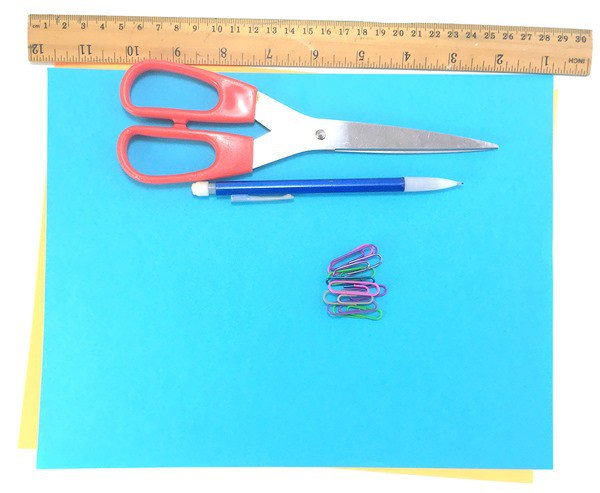 Image Credit: Sabine De Brabandere, Science Buddies / Science Buddies
Image Credit: Sabine De Brabandere, Science Buddies / Science Buddies
Prep Work
- Download and print the paper helicopter template. If you do not have access to a printer, you can download the file and open it on your computer. Then use a pencil and ruler to draw the paper helicopter shapes on a piece of paper, based on the dimensions in the template.
- Follow the directions on the template to cut out and fold both paper helicopters.
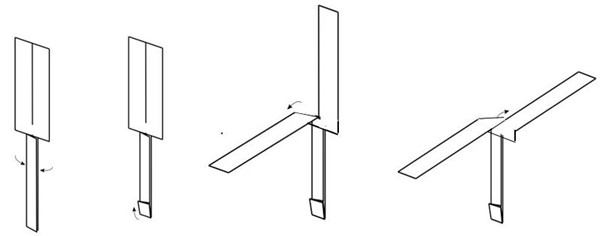 Image Credit: Sabine De Brabandere, Science Buddies / Science Buddies
Image Credit: Sabine De Brabandere, Science Buddies / Science Buddies
- On each paper helicopter, slide one paperclip over the folded tab at the bottom.
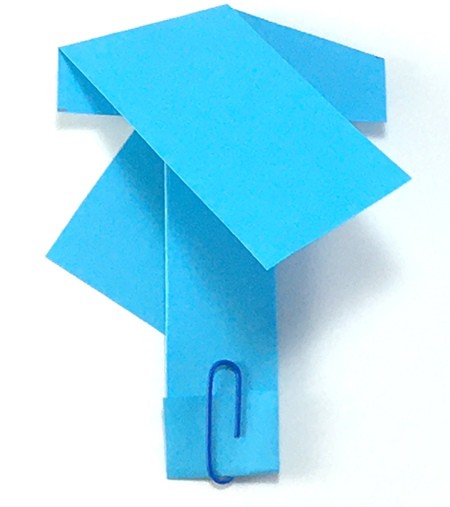 Image Credit: Sabine De Brabandere, Science Buddies / Science Buddies
Image Credit: Sabine De Brabandere, Science Buddies / Science Buddies
Instructions
- Hold the paper helicopter by the middle with the paper clip facing down, then let it go from high up. If it does not spin down, have an adult help you drop one of your paper helicopters from a safe, elevated location (such as while standing on a chair or a step stool, from a balcony, etc.)How did the paper helicopter fall?
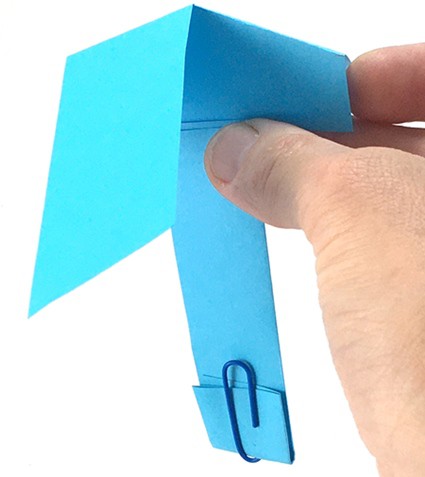 Image Credit: Sabine De Brabandere, Science Buddies / Science Buddies
Image Credit: Sabine De Brabandere, Science Buddies / Science Buddies
- Compare the two paper helicopters.How are they different? Do you think they will fall differently, and if so, in what way?
- Try it out!Did they fall differently?
- Drop each paper helicopter a couple more times from the same height.Why do you think it is important to drop them more than once?
- As your helicopter starts to rotate, the spinning blades generate lift that slows it down. When you look carefully, you may notice this. Drop a paper helicopter and pay attention during the first fraction of a second before it starts to spin. Compare how fast the helicopter falls during that fraction of a second to how fast it falls once it starts spinning.Did it fall faster before it started spinning?
- Because Mars's atmosphere is about 100 times thinner than Earth's atmosphere, it is much harder for a helicopter to create enough lift to get off the ground. Engineers had to change the blade design to create more lift so the helicopter could fly in Mars's thin atmosphere. You have two paper helicopters where only the blade length is different.Which one of your two paper helicopters falls more slowly? Based on your findings, would you suggest shorter or longer blades for a Mars helicopter? Why?
- Blade length is just one way to change the helicopter design.What other changes can you make to the blades of your paper helicopter? Which changes do you think will affect the amount of time the paper helicopter stays in the air?
- Look at all your test results.If you had to modify a helicopter to make it better equipped to fly on Mars, what would you change? Would you change the blade length, the width, the blade shape, the weight of the helicopter, etc., and why would you make these changes? Would you change more than one thing?
- Compare your findings with the illustration of the helicopter Ingenuity on the surface of Mars (illustration from NASA). This helicopter will fly around and help NASA's Perseverance rover explore Mars.Do you see some of your findings reflected in the design?Other than flying in the thin atmosphere, what different challenges might a helicopter encounter on a mission such as exploring Mars?
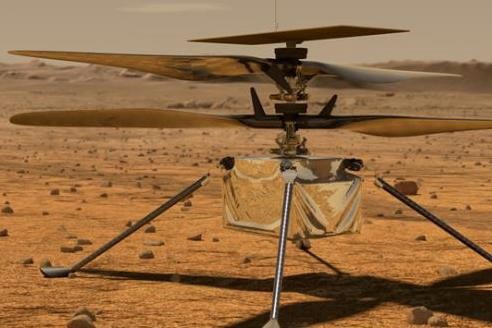 Image Credit: NASA / Public domain
Image Credit: NASA / Public domain
What Happened?
When you drop a paper helicopter, it will take a fraction of a second for it to start spinning and slow down. Did you notice how it fell faster before it started spinning? Once the paper helicopter spins, it should generate a push called "lift" which slows its descent to the ground. The paper helicopter that has shorter blades should fall faster because the shorter blades do not generate as much lift.
There might not be one single design for a paper helicopter that allows it to descend the slowest. That said, longer and wider blades that hit the air at an angle are generally better. These changes to the blades generally create more lift, and as a result, slow down the fall of the paper helicopter more. If you change the dimensions of your paper helicopter too drastically, however, your helicopter may actually become unstable and perform worse.
Due to its thin atmosphere, the blades of a Mars helicopter's must be bigger and spin faster than they would on Earth in order to generate enough lift. NASA's Ingenuity helicopter is very lightweight—only 4 pounds (on Earth)! Each blade is about 2 feet (0.6 meters) long, and the blades rotate about 2400 times per minute. A solar panel powers the helicopter and it operates autonomously. It is designed to land safely on the uneven Martian terrain. This way, it can help NASA's Perseverance rover explore the Martian surface.
Digging Deeper
Mars's gravity is much weaker than Earth's (about 38%). This means that while the Ingenuity helicopter weighs 4 pounds on Earth, it only weighs about 1.5 pounds on Mars! You might think that this makes it much easier for the helicopter to fly. However, Mars's thin atmosphere actually makes it more difficult. A helicopter needs air to fly. Air is made up of tiny particles that bounce around and press against everything around them. When the particles flow over a spinning helicopter blade, they collectively press up on the bottom of the blade harder than they press down on the top. This generates a net upward push, called lift. In general, the more particles there are packed closely together, the harder they can press on surfaces. In the thin Martian atmosphere, the particles are spaced much farther apart. In order to take off, the lift generated by the helicopter must be bigger than its weight, the force of gravity pulling it down. The reduction of lift due to the thinner atmosphere is much larger than the reduction of weight, therefore, in the thinner Martian atmosphere, the blades must be bigger and spin faster than they would in Earth's thicker atmosphere.
Other factors, like changing the shape or angle of the blades, can also influence lift. You may have experimented with some of these factors with your paper helicopter designs. Your paper helicopters did not generate enough lift to fly upward, but the lift helped slow their descent. The more lift they generated, the slower they fell.
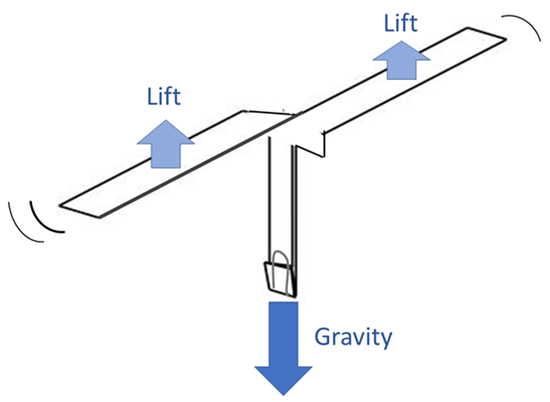 Image Credit: Sabine De Brabandere, Science Buddies / Science Buddies
Image Credit: Sabine De Brabandere, Science Buddies / Science Buddies
Ask an Expert
For Further Exploration
- Make paper helicopters out of other types of paper. Does the type of paper make a difference?
- Look up how to make a hand propeller toy and explore the effect of changes on the rotor blade design.
- Can you make the blades of your paper helicopter turn in the other direction?
- Use a stopwatch to time how long it takes for each paper helicopter to fall from a fixed height. The longer it takes, the slower the helicopter falls. Instead of a stopwatch, you can also film a slow-motion video and count the number of frames it takes for the helicopter to fall over a specified distance. The more frames it takes, the slower the helicopter falls. To calculate the time, divide the number of frames by the frame rate at which the slow-motion video was recorded. Many smartphones record slow-motion video at 120 or 240 frames per second, but you will need to look up this number for your phone. For example, if you counted 30 frames and recorded a rate of 120 frames per second, the fall took 30/120 or 0.25 seconds.
Related Resources
Project Ideas
Activities
Lesson Plans
- 3-5-ETS1-1. Define a simple design problem reflecting a need or a want that includes specified criteria for success and constraints on materials, time, or cost.
- 3-PS2-1. Plan and conduct an investigation to provide evidence of the effects of balanced and unbalanced forces on the motion of an object.


